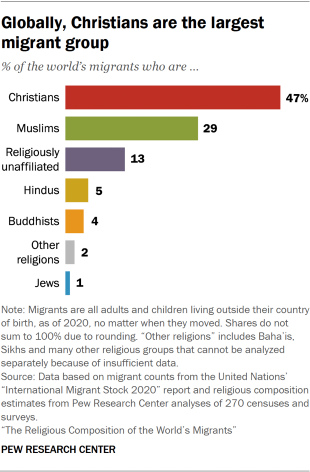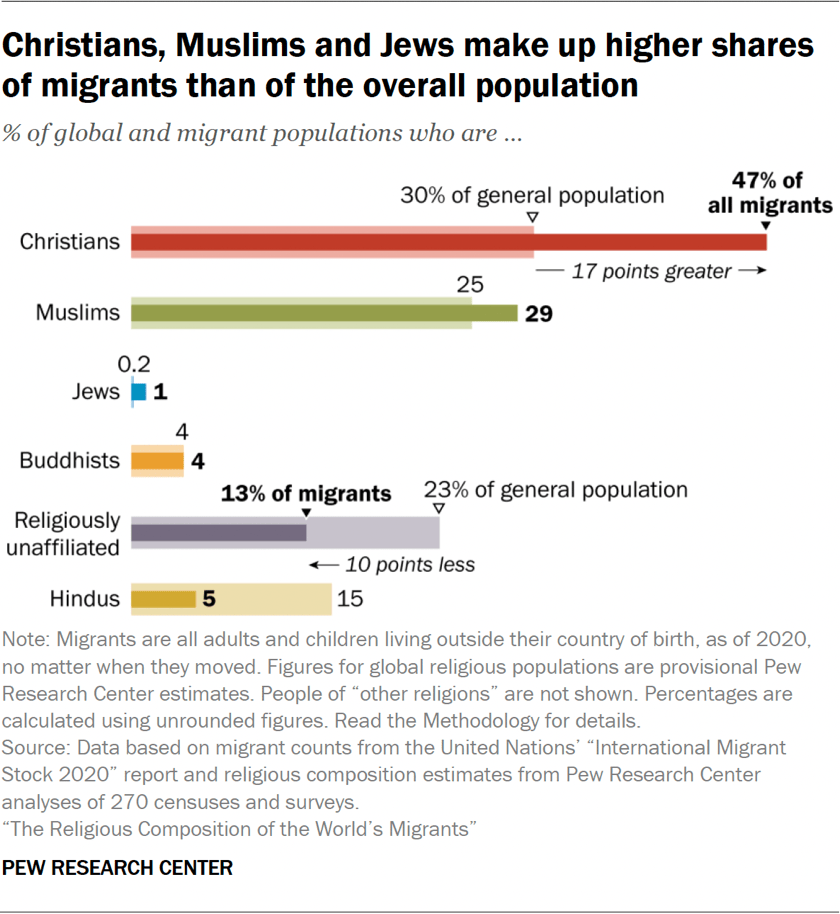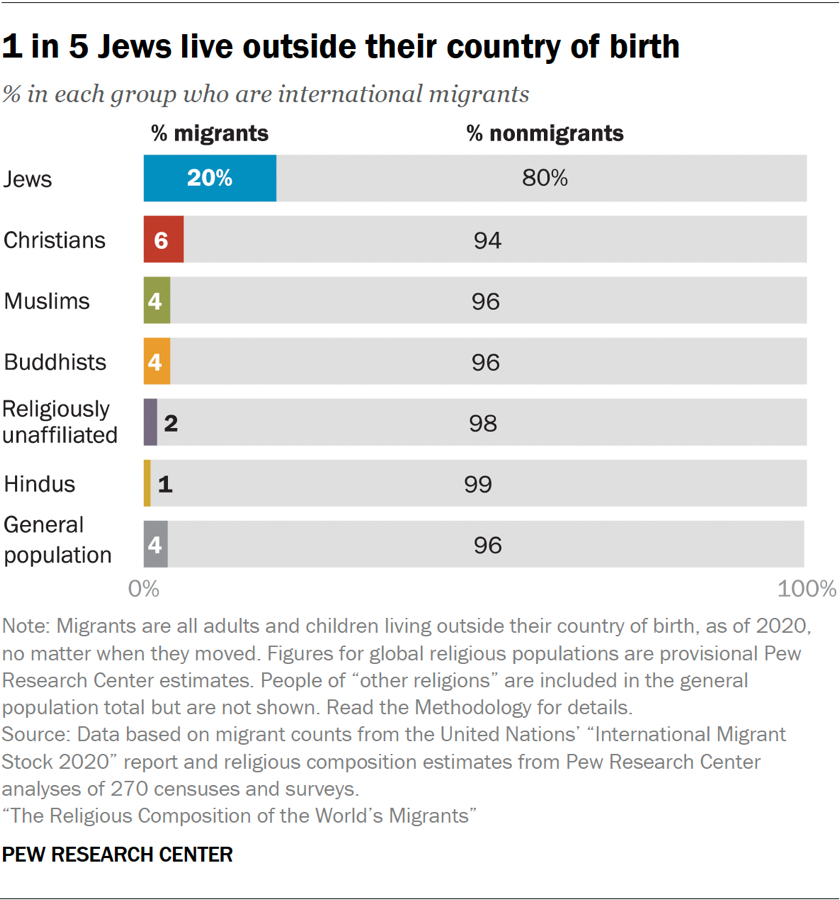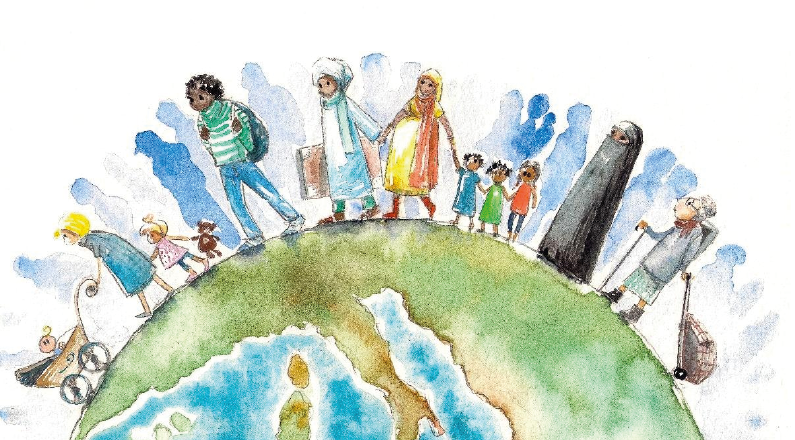(ZENIT News / Washington, 08.25.2024).- Global migration has seen a steady rise over the past few decades, with more than 280 million people—around 3.6% of the world’s population—now living outside their country of birth. This mass movement of people across borders has not only transformed demographics but also altered the religious makeup of nations worldwide.
A recent report by the Pew Research Center, drawing on data from the United Nations and over 270 censuses and surveys, highlights the religious composition of these international migrants. The findings reveal that Christians make up nearly half (47%) of all people living outside their birth countries. This is a significantly larger proportion than their share of the global population, which is about 30%. Mexico is the leading country of origin for Christian migrants, with the United States being their primary destination.

Muslims, who comprise 29% of international migrants, are the second-largest religious group on the move. This figure slightly exceeds their 25% share of the global population. The ongoing conflict in Syria has driven a large number of Muslims to seek refuge in neighboring countries like Saudi Arabia and other parts of the Middle East and North Africa.
Interestingly, those without any religious affiliation—comprising atheists, agnostics, and people who identify as having no religion—make up 13% of all international migrants. While this is lower than their 23% share of the global population, the trend reflects significant movement, particularly from countries like China, where secularism is more prevalent. The United States stands out as the most common destination for these religiously unaffiliated migrants.
The report also notes that Hindus, who represent 15% of the global population, are significantly underrepresented among international migrants, constituting only 5% of this group. India, both as a country of origin and as a destination, plays a central role in the migration patterns of Hindus. Similarly, Buddhists, who make up 4% of both the global population and the international migrant stock, predominantly migrate from Myanmar to destinations like Thailand.

Jews, although only 1% of international migrants, are disproportionately represented relative to their global population share of 0.2%. Israel is both the primary origin and destination for Jewish migrants, highlighting the unique migration patterns within this religious group. Remarkably, one in five Jews lives outside their country of birth, making them the most migratory among the major religious groups.
The relationship between religion and migration is complex and multifaceted. People move across borders for various reasons—economic opportunities, education, family reunification—but religion often plays a crucial role. Some migrants flee religious persecution, while others seek to live in communities that share their faith. As they move, migrants often bring their religious beliefs with them, subtly altering the religious landscape of their new countries. However, migration can also lead to shifts in religious identity, with some individuals adopting the dominant religion of their host country or abandoning religious practice altogether.
While each religious group’s migration patterns differ, there are also commonalities. Migrants often move to countries where their religious identity is already well-established. For instance, many Muslims migrate to Saudi Arabia, while Jews predominantly move to Israel. Christians and the religiously unaffiliated tend to gravitate toward the same top destinations, including the United States, Germany, and Russia.

Regardless of their religious affiliations, migrants generally move from regions of relative poverty or danger to countries where they hope to find greater prosperity and security. This ongoing shift in population and religion underscores the profound impact of migration on global religious dynamics.
This analysis by Pew Research Center is part of the Pew-Templeton Global Religious Futures project, which aims to explore the implications of global religious changes and their effects on societies worldwide.
Thank you for reading our content. If you would like to receive ZENIT’s daily e-mail news, you can subscribe for free through this link.



